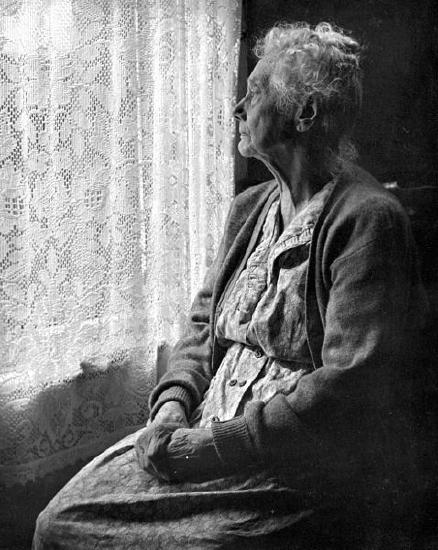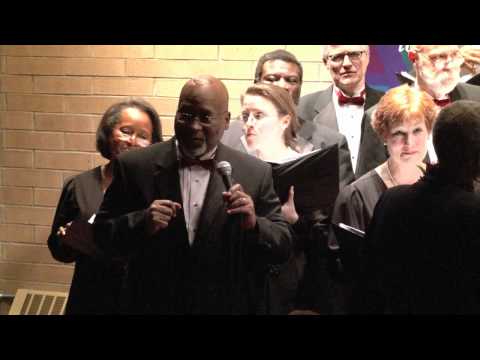18.3: The Functionalist Perspective on Aging
- Last updated
- Save as PDF
- Page ID
- 57127

- Boundless
- Boundless
Disengagement Theory
The disengagement theory of aging claims that it is natural and acceptable for older adults to withdraw from society and personal relationships as they age.
Learning Objectives
Analyze the nine postulates of growing old and the impact at each stage for the elderly in society
Key Points
- Disengagement theory claims that it is natural and acceptable for older adults to withdraw from society and personal relationships as they age.
- Disengagement theory was the first theory of aging developed by social scientists.
- The theory was developed by Elaine Cumming and Warren Earl Henry in their 1961 book “Growing Old.” Subsequently, the theory has been largely debunked.
Key Terms
- disengagement theory: The disengagement theory of aging claims that it is natural and acceptable for older adults to withdraw from society and personal relationships as they age.
- activity theory: Activity theory claims that staying mentally and physically active preserves older adults happier.
- Robert J. Havighurst: Robert James Havighurst (June 5, 1900 in De Pere, Wisconsin – January 31, 1991 in Richmond, Indiana) was a professor, physicist, educator, and aging expert.
The disengagement theory of aging claims that it is natural and acceptable for older adults to withdraw from society and personal relationships as they age. The theory further suggests that society responds to the elder’s disengagement with a sort of mutual recognition that the elder will soon pass and society must prepare to function in their absence. As such, the theory argues that it is natural and acceptable for older adults to withdraw from society.
The Postulates of Growing Old
Disengagement theory was the first theory of aging developed by social scientists. It was originally formulated by Elaine Cumming and Warren Earl Henry in their 1961 book Growing Old. In Growing Old, Cumming and Henry develop a logical argument for why older adults would naturally disengage from society. They formulate their argument along nine postulates to explain why it is rational for individuals who know that death is approaching and who have seen friends of their age pass to begin to anticipate their own deaths and disengage.

Elderly Woman: Disengagement theory suggests that adults become increasingly withdrawn as they get older.
The postulates are as follows:
- Postulate one: Everyone expects death, and one’s abilities will likely deteriorate over time. As a result, every person will lose ties to others in his or her society.
- Postulate two: Because individual interactions between people strengthen norms, an individual who has fewer varieties of interactions has greater freedom from the norms imposed by interaction. Consequently, this form of disengagement becomes a circular or self-perpetuating process.
- Postulate three: Because men have a centrally instrumental role in America, and women a socioemotional one, disengagement differs between men and women.
- Postulate four: The individual’s life is punctuated by ego changes. For example, aging, a form of ego change, causes knowledge and skill to deteriorate. However, success in an industrialized society demands certain knowledge and skill. To satisfy these demands, age-grading ensures that the young possess sufficient knowledge and skill to assume authority and that the old retire before they lose their skills. This kind of disengagement is affected by the individual, prompted by either ego changes or the organization, which is bound to organizational imperatives, or both.
Sunday Morning Stroll in Piazza del Popolo: The process of aging is greatly facilitated when older people pursue hobbies and relationships, and generally lead a more active lifestyle.
- Postulate five: When both the individual and society are ready for disengagement, complete disengagement results. When neither is ready, continuing engagement results. When the individual is ready and society is not, a disjunction between the expectations of the individual and of the members of this social systems results, but engagement usually continues. When society is ready and the individual is not, the result of the disjunction is usually disengagement.
- Postulate six: Man’s central role is work, and woman’s is marriage and family. If individuals abandon their central roles, they drastically lose social life space, and so suffer crisis and demoralization unless they assume the different roles required by the disengaged state.
- Postulate seven: Readiness for disengagement occurs if the individual is aware of the shortness of life and scarcity of time, the individual perceives his or her life space decreasing, and the individual loses ego energy. Each level of society grants individuals permission to disengage because of the following: requirements of the rational-legal occupational system in an affluent society; the nature of the nuclear family; and the differential death rate.
- Postulate eight: Fewer interactions and disengagement from central roles lead to the relationships in the remaining roles changing. In turn, relational rewards become more diverse, and vertical solidarities are transformed to horizontal ones.
- Postulate nine: Disengagement theory is independent of culture, but the form it takes is bound by culture.
Disengagement theory, suffering from a lack of empirical support, has largely been dismissed by social scientists and gerontologists.
Activity Theory
Activity theory proposes that successful aging occurs when older adults stay active and maintain social interactions.
Learning Objectives
Compare the activity model and disengagement model of aging, in terms of activity level and level of life satisfaction
Key Points
- The activity theory of aging proposes that older adults are happiest when they stay active and maintain social interactions.
- The theory was developed by Robert J. Havighurst as a response to the disengagement theory of aging.
- The disengagement model suggests that it is natural for the elderly to disengage from society as they realize that they are ever nearer to death.
Key Terms
- activity theory: Activity theory proposes that successful aging occurs when older adults stay active and maintain social interactions.
- Robert J. Havighurst: Robert James Havighurst (June 5, 1900 in De Pere, Wisconsin – January 31, 1991 in Richmond, Indiana) was a professor, physicist, educator, and aging expert.
- disengagement theory: The disengagement theory of aging states that “aging is an inevitable, mutual withdrawal or disengagement, resulting in decreased interaction between the aging person and others in the social system he belongs to.”
The activity theory of aging proposes that older adults are happiest when they stay active and maintain social interactions. These activities, especially when meaningful, help the elderly to replace lost life roles after retirement and, therefore, resist the social pressures that limit an older person’s world. The theory assumes a positive relationship between activity and life satisfaction. Activity theory reflects the functionalist perspective that the equilibrium, that an individual develops in middle age, should be maintained in later years. The theory predicts that older adults that face role loss will substitute former roles with other alternatives.
The theory was developed by gerontologist, or, scholar of aging, Robert J. Havighurst in 1961, and was originally conceived as a response to the recently published disengagement theory of aging. The disengagement model suggests that it is natural for the elderly to disengage from society as they realize that they are ever nearer to death. However, withdrawing from their central societal roles—working, marriage, raising a family —means they drastically lose social life space and so suffer crisis and demoralization.
Havighurst’s activity theory is at deliberate odds with what some perceive as the pessimism of disengagement theory. However, critics of activity theory state that it overlooks inequalities in health and economics that hinders the ability for older people to engage in such activities. Also, some older adults do not desire to engage in new challenges.
Five decades of gerontological research, however, suggest that the activity model is more accurate than the disengagement model. Not only is activity beneficial for the community, but it engages older adults (both physically and mentally) and allows them to socialize with others. This increases feelings of self-worth and pleasure, which are important for happiness and longevity.

A link to the YouTube element can be found in Contributors & Attributions section.
Oh Mary, Don’t You Weep: Participating in activities from which they used to derive pleasure in the past, such as singing, helps older people stay active and engaged.
Continuity Theory
The continuity theory proposes that older adults maintain the same activities, behaviors, personalities, and relationships of the past.
Learning Objectives
Examine the pros and cons of the continuity theory of aging, specifically in terms of how it neglects to consider social institutions or chronically ill adults
Key Points
- Internal structures of continuity remain constant over a lifetime and include elements, such as personality traits, ideas, and beliefs. It helps people make future decisions by providing them with a stable foundation in the past.
- External structures of continuity help maintain a stable self-concept and lifestyle and include relationships and social roles.
- George L. Maddox and Robert Atchley are most closely associated with the continuity theory.
- The theory is criticized for including a distinction between normal and pathological aging that does not take into account older adults with chronic diseases. The theory is also criticized for not considering the influence of social institutions on the aging of individuals.
Key Terms
- Internal Structures: (of an individual) remain relatively constant throughout a person’s lifetime and includes elements such as personality traits, ideas, and beliefs.
- External Structures: (of an individual) consist of relationships and social roles, and support the maintenance of a stable self-concept and lifestyle.
- Continuity Theory: The continuity theory of normal aging states that older adults will usually maintain the same activities, behaviors, personality traits, and relationships as they did in their earlier years of life.
The continuity theory of normal aging states that older adults will usually maintain the same activities, behaviors, personality traits, and relationships as they did in their earlier years of life. The theory considers the internal structures and external structures of continuity to describe how people adapt to their circumstances and set their goals.

The Internal and External Structures of Continuity: Older adults hold on to many of the beliefs, practices, and relationships they had in the past as they continue to age.
The internal structure of an individual – for instance, an individual’s personality traits – remains relatively constant throughout a person’s lifetime. Other internal aspects such as beliefs can remain relatively constant as well, though are also subject to change. This internal structure facilitates future decision-making by providing the individual with a strong internal foundation of the past. The external structure of an individual consists of relationships and social roles, and it supports the maintenance of a stable self-concept and lifestyle.
George L. Maddox and Robert Atchley are most closely associated with the continuity theory. Maddox provided an empirical description of the continuity theory in 1968 in a chapter of the book Middle Ageand Aging: A Reader in Social Psychology called “Persistence of Lifestyle among the Elderly: A Longitudinal Study of Patterns of Social Activity in Relation to Life Satisfaction. ” In 1971, Atchley formally proposed the theory in his article “Retirement and Leisure Participation: Continuity or Crisis? ” He continued to expound upon the theory over the years, explaining the development of internal and external structures in 1989 and publishing a book in 1999 called Continuity and Adaptation in Aging: Creating Positive Experiences.
The theory is criticized primarily for its definition of normal aging. The theory distinguishes between normal aging and pathological aging, so it neglects older adults who suffer from chronic illness. The theory also fails to explain how social institutions impact individuals and the way they age.
Contributors and Attributions
- Curation and Revision. by: Boundless.com. CC BY-SA
CC licensed content, Specific attribution
- Activity theory (aging). (CC BY-SA; Wikipedia via en.Wikipedia.org/wiki/Activity_theory_(aging))
- disengagement theory. (CC BY-SA; Wikipedia via en.Wikipedia.org/wiki/disengagement%20theory)
- Boundless. (CC BY-SA; Boundless Learning via www.boundless.com//sociology/definition/activity-theory)
- Robert J. Havighurst. (CC BY-SA; Wikipedia via en.Wikipedia.org/wiki/Robert%20J.%20Havighurst)
- Elderly Woman , B&W image by Chalmers Butterfield. (CC BY-SA; Wikipedia via en.Wikipedia.org/wiki/File:Elderly_Woman_,_B&W_image_by_Chalmers_Butterfield.jpg)
- (CC BY; Flickr via www.flickr.com/photos/yourdon/4161416677/sizes/m/in/photostream/)
- Oh Mary, Don't You Weep. at: http://www.youtube.com/watch?v=09g2sSKHBFU. Public Domain. License Terms: Standard YouTube license
- Activity theory (aging). (CC BY-SA; Wikipedia via en.Wikipedia.org/wiki/Activity_theory_(aging))
- disengagement theory. (CC BY-SA; Wikipedia via en.Wikipedia.org/wiki/disengagement%20theory)
- Boundless. (CC BY-SA; Boundless Learning via www.boundless.com//sociology/definition/activity-theory)
- Robert J. Havighurst. (CC BY-SA; Wikipedia via en.Wikipedia.org/wiki/Robert%20J.%20Havighurst)
- Elderly Woman , B&W image by Chalmers Butterfield. (CC BY-SA; Wikipedia via en.Wikipedia.org/wiki/File:Elderly_Woman_,_B&W_image_by_Chalmers_Butterfield.jpg)
- (CC BY; Flickr via www.flickr.com/photos/yourdon/4161416677/sizes/m/in/photostream/)
- Oh Mary, Don't You Weep. at: http://www.youtube.com/watch?v=09g2sSKHBFU. Public Domain. License Terms: Standard YouTube license
- Oh Mary, Don't You Weep. at: http://www.youtube.com/watch?v=09g2sSKHBFU. Public Domain. License Terms: Standard YouTube license
- Continuity theory (aging). (CC BY-SA; Wikipedia via en.Wikipedia.org/wiki/Continuity_theory_(aging))
- Boundless. (CC BY-SA; Boundless Learning via www.boundless.com//sociology/definition/continuity-theory)
- Boundless. (CC BY-SA; Boundless Learning via www.boundless.com//sociology/definition/external-structures)
- Internal Structures. (CC BY-SA; Wikipedia via en.Wikipedia.org/wiki/Internal%20Structures)
- Elderly Woman , B&W image by Chalmers Butterfield. (CC BY-SA; Wikipedia via en.Wikipedia.org/wiki/File:Elderly_Woman_,_B&W_image_by_Chalmers_Butterfield.jpg)
- (CC BY; Flickr via www.flickr.com/photos/yourdon/4161416677/sizes/m/in/photostream/)
- Oh Mary, Don't You Weep. at: http://www.youtube.com/watch?v=09g2sSKHBFU. Public Domain. License Terms: Standard YouTube license
- Oh Mary, Don't You Weep. at: http://www.youtube.com/watch?v=09g2sSKHBFU. Public Domain. License Terms: Standard YouTube license
- All sizes | old craft 046 | Flickr - Photo Sharing!. (CC BY; Flickr via http://www.flickr.com/photos/seven_of9/3600342891/sizes/m/in/photostream/)


